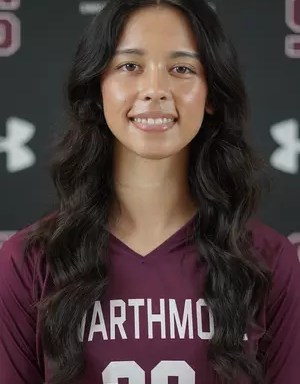Every year, the NCAA convenes to discuss the current state of college athletics and to propose and vote on new policies and rules. This past January, the NCAA gathered in Washington DC eager to bring about even bigger changes in college sports than ever before. On Sept. 3, 2015, the NCAA posted on their website about new regulations that will directly affect many collegiate student-athletes throughout the country in an article headlined, “9 ways life is changing for college athletes.” Although many of the changes affect athletes at the Division I and II levels, some of the new regulations may have an impact on athletics here at Swarthmore.
Over the past couple years, the NCAA has made attempts to increase the safety of student-athletes. For example, since 2011, the NCAA has mandated that all college baseball programs use a technologically less-advanced version of the metal bats that were previously used. The new metal bats, known as BBCOR bats, have been proven to hit baseballs at a lesser exit speed ratio than before. The implementation of BBCOR bats in college baseball reflects the NCAA’s preliminary attempt to reduce one of the most dangerous injuries in college sports — concussions. A new regulation mandates that all schools submit concussion safety protocols that are later reviewed by a committee of NCAA delegates. This committee ensures that the safety protocols coincide with both previous and current concussion safety regulations set in place. The purpose is to ensure that student athletes receive appropriate treatment under NCAA legislation. Legislation, a protocol checklist and the protocol committee roster are all available on NCAA.org.
For years, athletes who have chosen to attend and play at a DIII institution never experienced the luxury of signing a National Letter of Intent (NLI), unlike their DI and DII peers. The NLI program allows those who are receiving athletic scholarships at DI and DII levels to legally bind themselves to their scholarship. It’s simple: the student-athlete agrees to attend the offering institution for one full academic year, earning an athletic scholarship in return. Because DIII athletes cannot be offered an athletic scholarship, they are not allowed to participate in the NLI program. Now, DIII recruits may sign a “non-binding athletics celebratory signing form” after their acceptance into the recruiting institution. Although DIII athletes will still not be able to sign an actual NLI, this change marks the beginning of greater recognition for DIII athletics.
In addition to these significant changes, the NCAA also voted to establish women’s beach volleyball as an official sport across all divisions. The sport has already received commitment from around 50 institutions, including Arizona State, UC Berkeley, and Louisiana State. The sport will also include an official NCAA Championship tournament beginning in the spring of 2016.
Several other important changes were made, but many only affect athletes at the DI and DII levels and therefore won’t affect student-athletes here at Swarthmore. For example, DI and DII recruits are now being held to a higher academic standard. New regulations have lifted the minimum GPA in core high school courses to 2.3. Each GPA from 2.3 and upward is matched with an ACT or SAT score that students must achieve in order to be eligible to participate in athletics. The higher the GPA, the lower the test score requirement and vice versa.
Lastly, some colleges around the country are beginning to make even more changes. Sixty-five DI institutions from some of the more well known conferences including the ACC, Big Ten, PAC-12 and SEC have come together to form a small agreement of their own. Said institutions may no longer pull an athletic scholarship based on athletic capability, and “athletic aptitude” is no longer a viable reason to revoke a scholarship from an athlete. However, said institutions may still revoke scholarships in other cases, including behavioral issues or refusal to participate, in which case the scholarship would be revoked the next year.
These changes reflect the NCAA’s attempt to readjust the way colleges recruit players and treat their athletes. For the past several years, many institutions have demanded change in NCAA regulations, and now their demands are beginning to be met. New policies and rules are being put into motion to satisfy the demands of institutions without sacrificing the quality of life for student athletes. However, the peak of this change has only just begun.
















